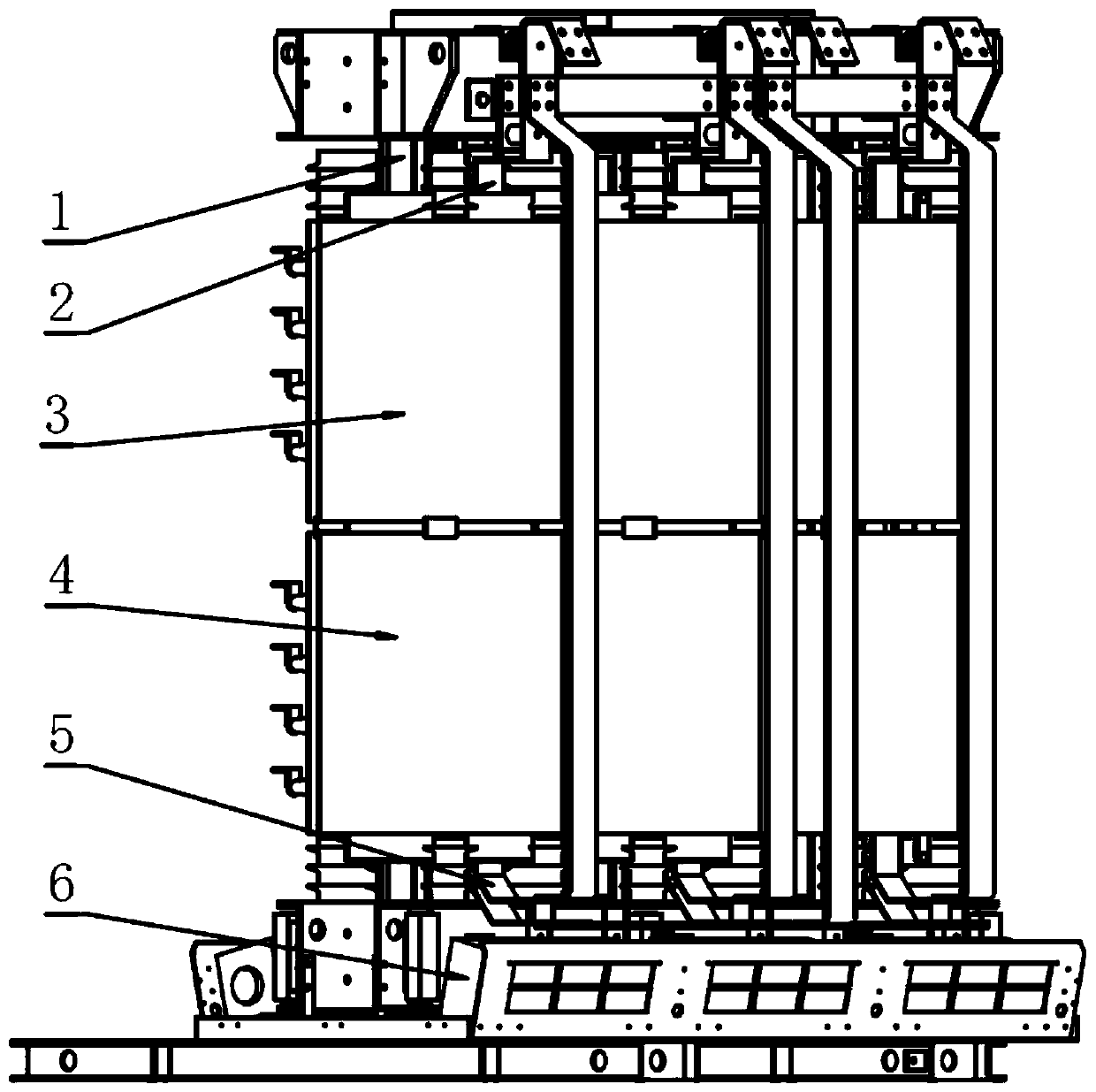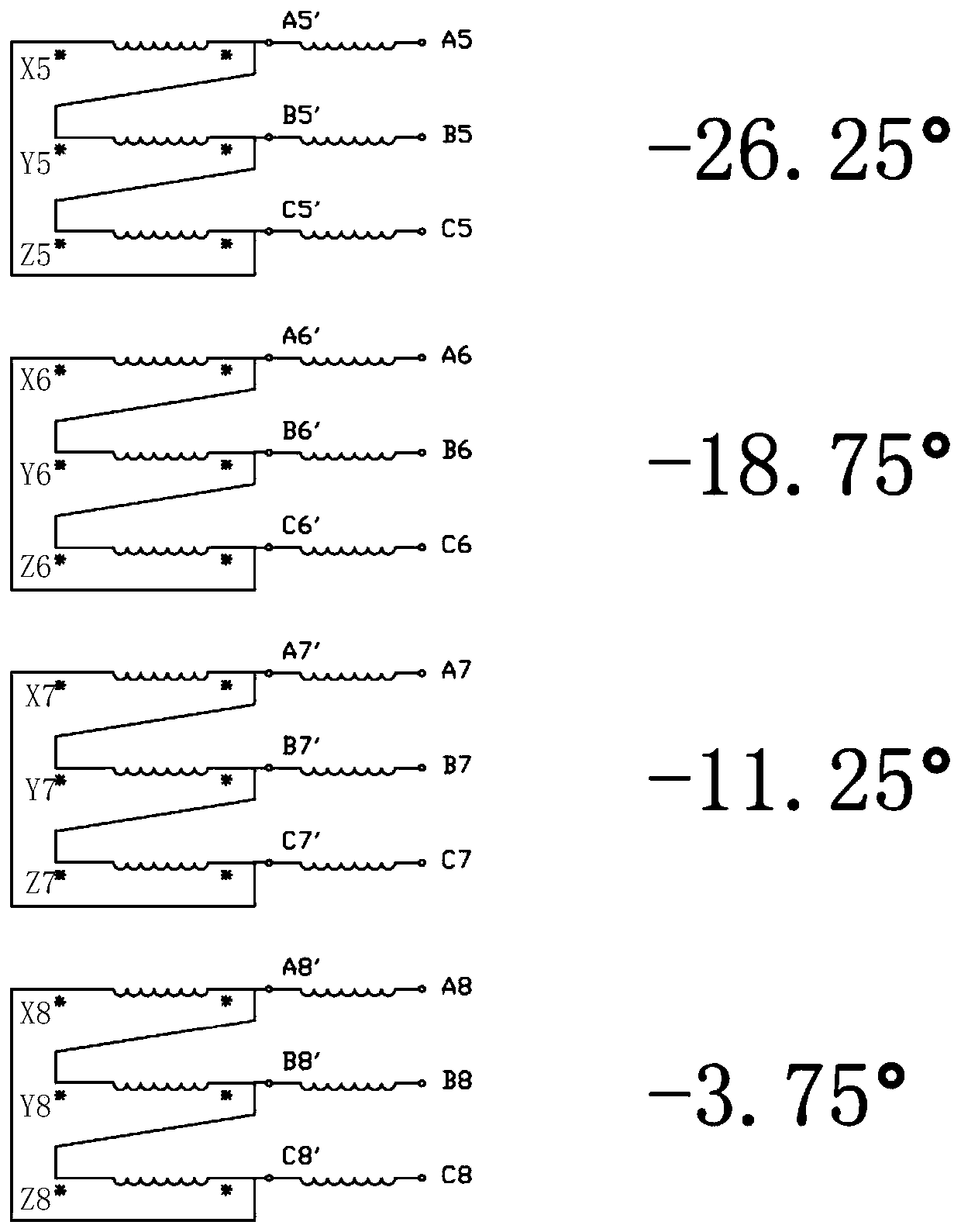Wind power generation boosting transformer and power transformation system for wind power direct-current power transmission and transformation
A technology of step-up transformer and output terminal is applied in the field of power transmission and transformation, which can solve the problems of unfavorable wind power projects, such as grid parity, long transmission cables, and large AC loss.
- Summary
- Abstract
- Description
- Claims
- Application Information
AI Technical Summary
Problems solved by technology
Method used
Image
Examples
Embodiment Construction
[0024] The core of the present invention is to provide a wind power generation step-up transformer and a wind power DC transmission and transformation system, which are used to reduce the loss in the wind power transmission process, and there is no need to install a compensation device and a booster station on the wind power transmission and transformation line , to reduce the cost of wind farm projects.
[0025] The following will clearly and completely describe the technical solutions in the embodiments of the present invention with reference to the accompanying drawings in the embodiments of the present invention. Obviously, the described embodiments are only some, not all, embodiments of the present invention. Based on the embodiments of the present invention, all other embodiments obtained by persons of ordinary skill in the art without making creative efforts belong to the protection scope of the present invention.
[0026] figure 1 It is a schematic structural diagram ...
PUM
 Login to View More
Login to View More Abstract
Description
Claims
Application Information
 Login to View More
Login to View More - R&D
- Intellectual Property
- Life Sciences
- Materials
- Tech Scout
- Unparalleled Data Quality
- Higher Quality Content
- 60% Fewer Hallucinations
Browse by: Latest US Patents, China's latest patents, Technical Efficacy Thesaurus, Application Domain, Technology Topic, Popular Technical Reports.
© 2025 PatSnap. All rights reserved.Legal|Privacy policy|Modern Slavery Act Transparency Statement|Sitemap|About US| Contact US: help@patsnap.com



